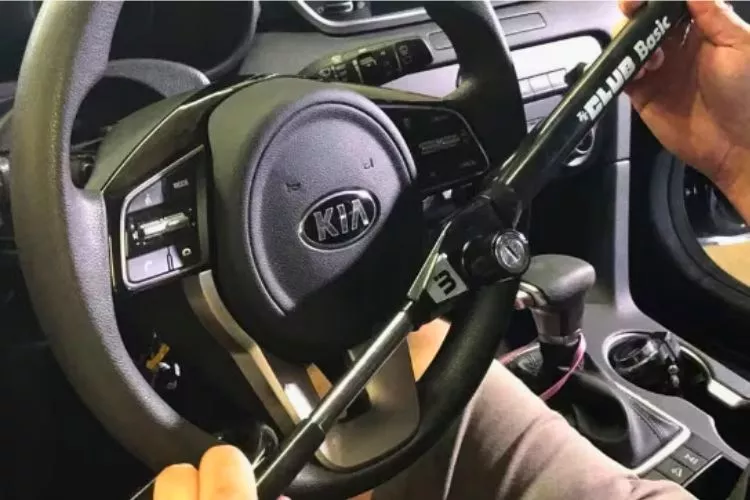Have you ever been in a situation where you turn the key in the ignition, but your car won’t start? Unfortunately, if your vehicle has a bad ignition switch, you might be in this frustrating scenario more often than you’d like.

But don’t worry; there’s no need for a tow truck. I will guide you through starting a car with a bad ignition switch, from identifying the symptoms to providing step-by-step instructions. So, put on your DIY hat, and let’s get started!
Table of Contents
how to start a car with a bad ignition switch?
Here I will guide you through several alternative car starting methods, even with a faulty ignition switch. Safety comes first, so exercise caution and seek professional help if you are unsure about attempting any of these methods.
🚗 Method 1: Use a Screwdriver to Turn the Ignition Switch
- First, ensure your car is in “Park” or “Neutral” and the parking brake is engaged.
- Locate the ignition switch, which is typically situated behind the steering wheel.
- Insert a flathead screwdriver into the keyhole and gently wiggle it around to engage the ignition switch.
- Turn the screwdriver clockwise, simulating the action of turning a key. The engine should start.
Warning: This method may cause damage to the ignition switch, and it is illegal to operate a vehicle without a proper key. Use this method only in emergencies and as a temporary solution.
🚗 Method 2: Jumpstarting the Car
- Position another vehicle with a working battery close to your car but not touching.
- Turn off both vehicles and ensure they are in “Park” or “Neutral” with the parking brakes engaged.
- Connect one end of the red (positive) jumper cable to the positive terminal of the working battery.
- Connect the red cable’s other end to the dead battery’s positive terminal.
- Connect one end of the black (negative) jumper cable to the working battery’s negative terminal.
- Connect the other end of the black cable to an unpainted metal surface on your car’s engine block, away from the battery.
- Start the working vehicle and let it run for a few minutes.
- Attempt to start your car. If successful, let it run for several minutes before disconnecting the jumper cables in reverse order.
Precaution: Always follow the manufacturer’s guidelines for jumpstarting your specific vehicle model.
🚗Method 3: Hotwiring the Car
- Locate the wiring harness connector under the steering column.
- Identify the battery, ignition, and starter wires, usually red, yellow, and green or blue.
- Strip about 1 inch of insulation from the battery and ignition wires.
- Twist the exposed ends of the battery and ignition wires, which should turn on your car’s electrical system.
- Strip the insulation from the starter wire and touch it to the twisted battery and ignition wires. The engine should start.
Warning: Hotwiring a car is potentially dangerous and may cause damage to your vehicle’s electrical system. It is also illegal in many jurisdictions. Use this method only in emergencies and as a last resort.
🚗Method 4: Replacing the Ignition Switch
- Disconnect the negative battery terminal to prevent electrical shock.
- Remove the steering column cover, typically held in place by screws or clips.
- Locate the ignition switch and disconnect the wiring harness.
- Unscrew or unclip the ignition switch from the steering column.
- Install the new ignition switch, ensuring it is securely attached.
- Reconnect the wiring harness and reassemble the steering column cover.
- Reconnect the negative battery terminal and test the new ignition switch with your key.
Precaution: Replacing the ignition switch can be complex and require specialized tools. Consult your vehicle’s service manual for specific instructions, or seek professional assistance if unsure.
I hope now you got a idea about how to start a car with a bad ignition switch, you can easily try these 4 methods and if you still have any confusion, please let me know in the comment box.
How to bypass the Kia ignition switch
It’s crucial to approach this task cautiously and follow the instructions carefully to ensure your safety and avoid causing further damage to your vehicle. We highly recommend seeking professional assistance if you are unsure or uncomfortable with performing this task.

In this step-by-step guide, we’ll walk you through bypassing the ignition switch on a Kia vehicle, emphasizing safety precautions and the importance of thoroughness.
🚗 Required Tools and Materials
- Flathead screwdriver
- Wire stripper
- Electrical tape
- Protective gloves
- Safety goggles
- Step-by-Step Process
🚗 Step-by-Step Guide
Step 1: Wear your protective gloves and safety goggles to ensure safety throughout the process.
Step 2: Disconnect the negative battery terminal to prevent electrical shock or short circuits while working on the ignition switch.
Step 3: Remove the steering column cover using a flathead screwdriver to expose the ignition switch and wiring.
Step 4: Locate the wiring harness connected to the ignition switch. You should see a set of wires bundled together.
Step 5: Identify the battery, ignition, and starter wires. In most Kia vehicles, these wires are typically red, yellow, and green or blue.
Step 6: Using the wire stripper, carefully strip about 1 inch of insulation from the battery and ignition wires.
Step 7: Twist the exposed ends of the battery and ignition wires, and secure them with electrical tape. This will turn on your car’s electrical system.
Step 8: Strip the insulation from the starter wire and momentarily touch it to the twisted battery and ignition wires. The engine should start. Once the engine starts, immediately remove the starter wire from the twisted wires to avoid damage.
Step 9: After successfully starting your car, carefully reassemble the steering column cover and reconnect the negative battery terminal.
Safety Precaution: Always disconnect the battery before working on your vehicle’s electrical system, and remember to wear protective gear to minimize the risk of injury.
How to fix a bad ignition switch
A faulty ignition switch can cause issues with starting your vehicle and may even leave you stranded. This comprehensive guide covers how to diagnose and fix a faulty ignition switch, ensuring your vehicle is back up and running in no time.

🚗 Diagnosing the Problem
Before fixing the ignition switch, accurately diagnosing the problem is essential. Follow these steps to determine if the ignition switch is the issue:
Check the battery: Ensure your vehicle is fully charged and in good working condition. A dead or weak battery can cause similar symptoms to a faulty ignition switch.
Inspect the starter: Listen for any unusual noises or signs of malfunction when attempting to start your vehicle. If the starter motor is faulty, it may need replacement.
Test other electrical components: Check other electrical components in your vehicle, such as the alternator, fuses, and relays. If any of these faulty components are, they may cause issues with starting your vehicle.
Inspect the ignition switch: The ignition switch is likely the problem if all other components function correctly. Look for wear, damage, or corrosion on the switch and its connections.
🚗 Removing the Old Ignition Switch
Once you’ve diagnosed the problem, follow these steps to remove the old ignition switch:
Disconnect the battery: Always disconnect the negative battery terminal before working on your vehicle’s electrical system to prevent shock or short circuits.
Remove the steering column cover: Using a screwdriver, carefully remove the screws or clips holding the steering column cover in place, and then remove the cover to expose the ignition switch.
Disconnect the wiring harness: Locate the harness connected to the ignition switch and carefully disconnect it.
Remove the old ignition switch: Unscrew or unclip the ignition switch from the steering column, avoiding damaging any surrounding components.
🚗 Installing the New Ignition Switch
With the old ignition switch removed, follow these steps to install the new one:
Position the new ignition switch: Align the new ignition switch with the mounting holes or clips on the steering column.
Secure the ignition switch: Screw or clip the new ignition switch into place, ensuring it is securely attached to the steering column.
Connect the wiring harness: Reconnect the harness to the new ignition switch, ensuring all connections are secure and properly aligned.
Reassemble the steering column cover: Replace the steering column cover and secure it with the screws or clips.
🚗 Testing the New Ignition Switch
After installing the new ignition switch, testing its functionality is essential. Use the following checklist to ensure the new ignition switch is working correctly:
Reconnect the battery: Reconnect the negative battery terminal and ensure it is securely fastened.
Test the ignition switch: Insert your key into the ignition and attempt to start your vehicle. The engine should start smoothly, and all dashboard lights should function correctly.
Check the steering wheel lock: With the key removed from the ignition, ensure the steering wheel lock engages and disengages as expected.
Verify proper accessory functionality: Test all vehicle accessories, such as the radio, wipers, and lights, to ensure they function correctly when the key is in the appropriate ignition position.
Other Tutorial You May Find Useful: How to Start a Car with a Bad Starter | How to Test Alternator with Screwdriver
Frequently Asked Questions (FAQs)
How can you tell if ignition switch is bad?
Difficulty starting the vehicle
Intermittent loss of power to accessories
Stalling while driving
Flickering dashboard lights
A hot ignition switch or key
How easy is it to fix an ignition switch?
Does a new ignition switch require a new key?
Conclusion
Knowing how to start a car with a bad ignition switch may be necessary in certain situations, such as emergencies or when professional assistance is unavailable. However, it is essential to remember that this should only be a temporary solution, and the faulty ignition switch must be addressed as soon as possible to ensure the safety and reliability of your vehicle.
Bypassing the ignition switch can cause further damage to your vehicle’s electrical system and may even void your warranty. Therefore, it is always recommended to consult a professional mechanic for a proper diagnosis and repair. By understanding the risks and taking appropriate precautions, you can make informed decisions about your vehicle’s maintenance and keep it running smoothly for years.
